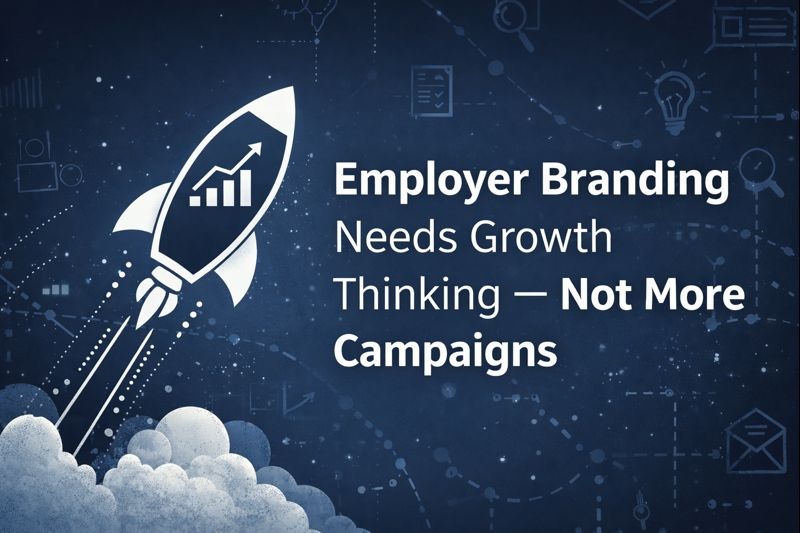Feb20

Over the last several years, the technology industry has seen a paradigm shift toward the adoption of flexible consumption business models.
FCM, also known as “as-a-Service” or XaaS models, offer customers product delivery and payment options that allow them to purchase access to products as a service. FCMs provide compelling benefits to companies that effectively deliver them to the market: They enable predictable, renewable revenue streams, deliver more excellent value to the end customer by allowing them to pay Only what they consume enables more profound insights into customer consumption patterns to help inform add-on sales and lower operational costs by enabling a company to serve customers at scale through a common platform.
Lets talk about XaaS (As a Service) here
Before jumping into what it is lets try to understand what falls under XaaS.
You may have heard about SaaS, IaaS and PaaS. These are the three types of cloud computing. I would not be wrong if I say SaaS, IaaS & PaaS, the terminologies coined from cloud computing.
Cloud computing is becoming the norm, and many businesses are phasing out on-premise software altogether.
Few years ago, all of a company’s IT systems were on-premise, and clouds were just white fluffy things in the sky.
Now, you will be amazed to know that you can utilize the Cloud platform for nearly all your systems and processes.
SaaS, PaaS, and IaaS are simply three ways to describe how you can use the Cloud for your business.
IaaS examples: AWS EC2, Rackspace, Google Compute Engine (GCE), Digital Ocean, Magento 1 Enterprise Edition
PaaS Examples: AWS Elastic Beanstalk, Heroku, Windows Azure (primarily used as PaaS), Force.com, OpenShift, Apache Stratos, Magento Commerce Cloud.
SaaS examples: BigCommerce, Google Apps, Salesforce, Dropbox, MailChimp, ZenDesk, DocuSign, Slack, Hubspot.
Globally, the size of the SaaS market, which stood at $100 billion in 2019, is growing at 22.6 per cent CAGR, according to a recent NASSCOM report. Moreover, the report also states that the domestic market for SaaS India is likely to expand 6x to $13–15 billion by 2025.Covid-19 has truly accelerated the growth of SaaS startups and SaaS emerging as key growth driver.
Here’s a great visual breakdown of which I have designed and hopefully this simplifies the concept of SaaS, PaaS, and IaaS.

SaaS platforms make software available to users over the internet, usually for a monthly subscription fee.
Over the internet.
- With SaaS, you don’t need to install and run software applications on your computer (or any computer).
- Everything is available over the internet when you log in to your account online.
- You can usually access the software from any device, anytime (as long as there is an internet connection).
- You no longer need to engage an IT specialist to download the software onto multiple computers throughout your office or worry about keeping the software on every computer up-to-date.
- It’s all taken care of in the Cloud.
- Another key advantage is the payment structure.
- Most SaaS providers operate a subscription model with a fixed, inclusive monthly account fee. It could be monthly and annual and few offers for six months. You know precisely how much the software will cost and budget accordingly, without worrying about hidden surprises.
- Most subscriptions include maintenance, compliance, and security services, which can be time-consuming and costly when using on-premise software.
SaaS providers also offer out of the box solution that are simple to set up (if you need a basic package), with more complex solutions for larger organizations.
You could have the essential software up and running within a matter of hours — and you’ll have access to customer service and support along the way.
SaaS platforms are:
SaaS platforms are ideal for when you want an application to run smoothly and reliably with minimal input from you.
Take your email server, for example.
You want to know that you’ll continue sending and receiving emails without needing to fiddle with your email settings or worry about updates.
Imagine if your email server went under because you forgot to update it, and you went days without email? That’s simply not an option in today’s marketplace.
If you use a SaaS platform to run your email inbox, the chances of something going wrong are very small.
And if something did go wrong, it would be up to the SaaS provider to find a solution.
You’re not only paying for the SaaS applications/products: you’re paying for peace of mind.
BigCommerce is an example of a SaaS ecommerce platform.
BigCommerce provides complete shopping cart software and hosting infrastructure to the user, allowing businesses to create an online shop within minutes without worrying about coding, hosting, or software.
The BigCommerce platform also has regular updates that automatically roll out for users, and all the software licenses, upgrades, and hosting costs are covered in the monthly subscription fee.
2. IaaS (Infrastructure as a Service)
IaaS businesses offer services such as pay-as-you-go storage, networking, and virtualization.
IaaS gives users cloud-based alternatives to on-premise infrastructure, so businesses can avoid investing in expensive on-site resources.
Over the internet.
- Maintaining on-premise IT infrastructure is costly and labor-intensive.
- It often requires a significant initial investment in physical hardware. You will probably need to engage external IT contractors to maintain the hardware and keep everything working and up-to-date.
- With IaaS, you can buy what you need, as you need it, and purchase more as your business grows.
- IaaS solutions are highly flexible and highly scalable, and you can replace them whenever you need them without losing money on your initial investment.
- Another advantage of IaaS is it puts control over the infrastructure back in your hands.
- You no longer need to place faith in an external IT contractor; you can access and oversee IaaS platforms yourself if you wish (without being an IT whizz).
IaaS platforms are:
IaaS is beneficial to businesses of all shapes and sizes. It allows complete control over your infrastructure and operates on a pay-as-you-use model, so it fits into most budgets.
As it becomes less common to invest in physical hardware and IT infrastructure, choosing IaaS alternatives is a safer, more reliable option.
With most IaaS platforms, you get access to ongoing support and have the option of scaling up your requirements at any time.
Utilizing IaaS is an excellent way to future-proof your business.
An excellent example of IaaS is AWS EC2.
EC2 provides scalable infrastructure for companies who want to host cloud-based applications.
EC2 users do not own the physical servers; AWS provides virtual servers.
So users only pay for the servers’ usage, saving them the cost (and associated ongoing maintenance) of investing in physical hardware.
Magento 1 Enterprise Edition can be either on-premise or IaaS, depending on how the merchant chooses to host their store.
In case the merchant is paying Magento for the licensing of the software and then using a third-party vendor for the best web hosting such as Rackspace.
Merchants can pay for a hosting plan that meets their own needs without the cost of maintaining their physical servers.
The merchant is still responsible for installing and managing updates to their Magento software.
3. PaaS (Platform as a Service)
A PaaS vendor provides hardware and software tools over the internet, and people use them to develop applications. PaaS users tend to be developers.
Over the internet.
- PaaS is primarily used by developers who are building software or applications.
- A PaaS solution provides the platform for developers to create unique, customizable software.
- This means developers don’t need to start from scratch when creating applications, saving them a lot of time (and money) on writing extensive code.
- PaaS is a popular choice for businesses who want to create unique applications without spending a fortune or taking on responsibility.
- It’s kind of like the difference between hiring a venue to put on a show vs building a venue to put on a show.
- The venue stays the same, but what you create in that space is unique.
PaaS Characteristics:
PaaS platforms are:
Accessible by multiple users.
Scalable — you can choose from various tiers of resources to suit the size of your business.
Built on virtualization technology.
Easy to run without extensive system administration knowledge.
PaaS is often the most cost-effective and time-effective way for a developer to create a unique application.
PaaS allows the developer to focus on the creative side of app development instead of menial tasks such as managing software updates or security patches. All of their time and brainpower will go into creating, testing, and deploying the app.
A good example of PaaS is AWS Elastic Beanstalk.
Amazon Web Services (AWS) offers over 100 cloud computing services such as EC2, RDS, and S3.
Most of these services can be used as IaaS, and most companies who use AWS will pick and choose the services they need. All you need to do is upload and maintain your application.
The increasing popularity of IaaS, PaaS, and SaaS is reducing the need for on-premise hosting.
Each of these Cloud computing server models give users a choice, flexibility, and options that on-premise hosting cannot provide.
Some cloud computing server models are more complicated than others.
The system administration knowledge level decreases as you go down the list in this order: On-premise > IaaS > PaaS > SaaS.
Here’s another visual breakdown from Hosting Advice, this time using Burger to breakdown each type:

In the year of 2019 I had organized Techstars Startup Weekend XaaS (Anything as a Service ) at Microsoft Garage and I still remember we got some phenomenal ideas and prototypes.
The mantra for the any corporates to succeed is to move to XaaS (Anything as a Service ) model, However there is a methodology needs to be followed during transitioning from traditional operating model to a services operating model:
There are five important steps in transitioning from a traditional operating model to a services operating model:
1. Establish a transformation office with executive sponsorship
2. Disaggregate the operating model into a set of services
3. Determine the level of standardization within each service
4. Operationalize each service
5. Establish service life cycle management
My next blog will comprise the detailing of above mentioned five steps and more. ( To be continued…)
Till then keep reading and keep writing
By Aditya Patro
Keywords: Cloud
 Concrete’s Carbon Problem and the Race to Fix It
Concrete’s Carbon Problem and the Race to Fix It Employer Branding Needs Growth Hacking — Not More Campaigns
Employer Branding Needs Growth Hacking — Not More Campaigns The Wireless Renaissance: From Tesla’s Dream to Agentic Autonomy
The Wireless Renaissance: From Tesla’s Dream to Agentic Autonomy Collective Resonance: How Consciousness Scales Beyond the Individual
Collective Resonance: How Consciousness Scales Beyond the Individual Autonomous Wingmen: Scaling Sustainable Aviation via NVIDIA NAT and Formation Flight
Autonomous Wingmen: Scaling Sustainable Aviation via NVIDIA NAT and Formation Flight